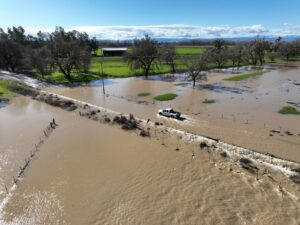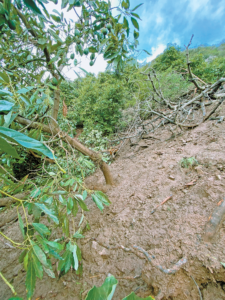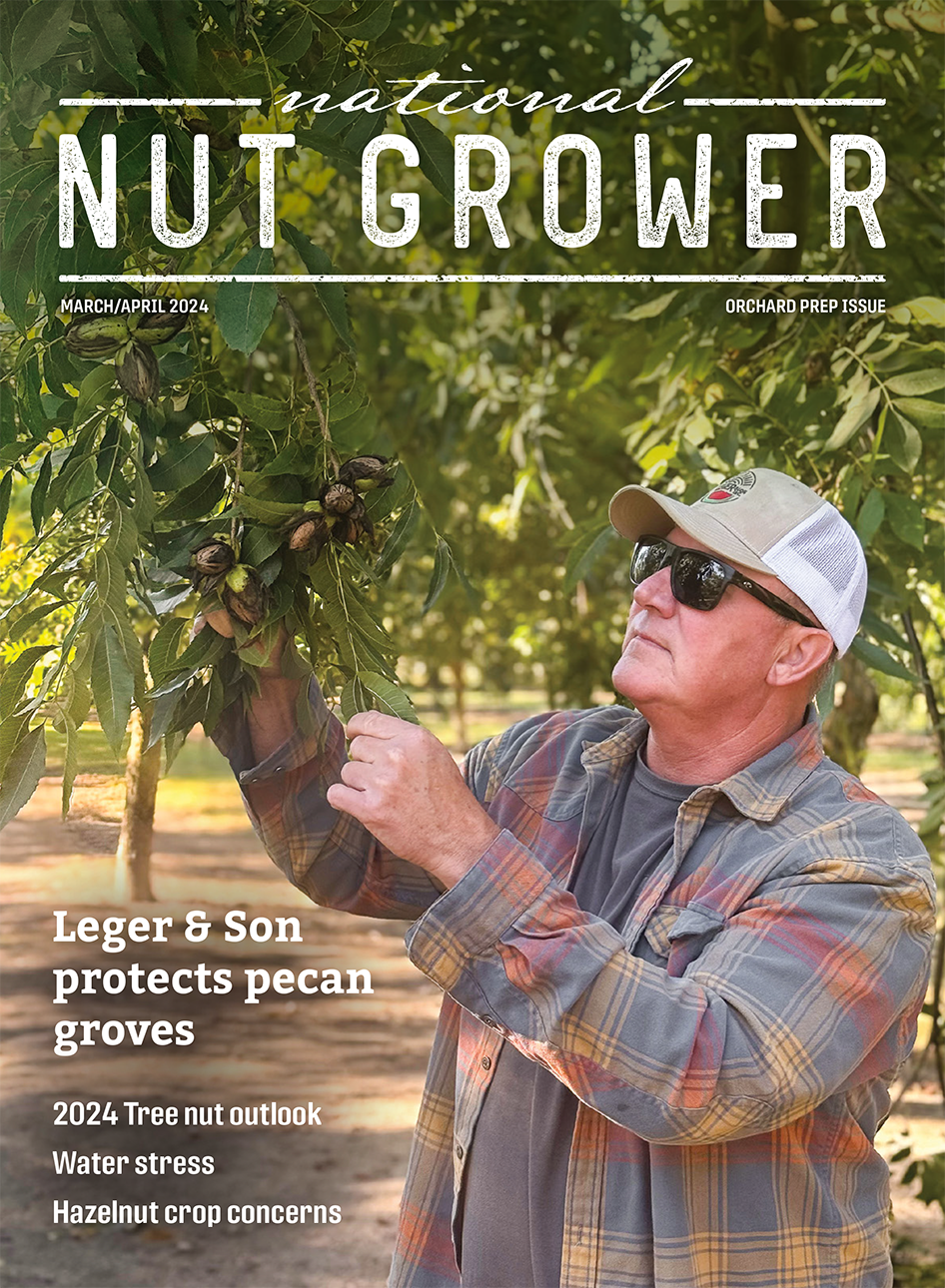Feb 15, 2024California growers wait for fields to dry
With a respite from stormy weather, farmers say they are surveying for any damage and waiting for the ground to dry so they can access fields and orchards to make repairs or do other practices.
Historic and deadly storms that brought two weeks of rain and powerful winds to California led to mudslides, flooding and widespread power outages and related evacuations. A state of emergency was declared for eight Southern California counties.

In Santa Barbara County, farm manager Sheldon Bosio of Goleta-based Terra Bella Ranches said three mudslides affected about 40 avocado trees or about half an acre, which is half of what was lost from mudslides caused by storms last year.
“We farm a lot of hillsides, so a terrace will break from saturated soil, and then it moves and takes out the avocados below,” Bosio said. “The avocado trees at the top of the hill, where the majority of the weight (from the mud) was, those got buried, but the trees at the bottom are salvageable.”
He estimated it may cost $10,000 for large equipment to repair the terrace road, plus labor to replace irrigation infrastructure and remove mud and brush from the groves.
As for the avocados on the trees, Bosio said the fruit hasn’t yet reached maturity.
“I don’t know of anybody that has started picking, because with the rain, it’s hard to get a crew in to pick, so everybody is waiting for things to dry out,” Bosio said.

Steve Pinto, purchasing director for Salinas-based Markon Cooperative, which supplies produce to foodservice, said crops such as strawberries and cilantro in Ventura County were impacted by excessive rains.
He noted flooded fields meant strawberry farmers had to cancel or postpone production.
“Large-stemmed strawberries have been the biggest industry challenge for Valentine’s Day orders due to weather this year,” Pinto said, noting Markon can source product from other growing regions and doesn’t anticipate supply gaps.
For the state’s winter vegetable crop, which transitioned to the desert growing region last fall, Imperial County farmer John Shaw raised concerns of crop mildew. He noted grounds were already wet from earlier rains when the recent storm dumped more moisture.
Shaw, who grows conventional and organic produce in Holtville, California, said the weather hasn’t disrupted harvest in his area. To minimize market disruptions, he confirmed that shippers packed orders in advance of the storms to supply customers.
Tulare County citrus farmer Matt Watkins, director of farm and field operations for Bee Sweet Citrus in Fowler, said the rain that hit the southern San Joaquin Valley is nothing close to the widespread flooding the region experienced last year.
Last March, water overtopped creek banks while reservoir releases flowed down rivers to the Tulare Lake bottom.
“Because we haven’t really got the bull’s-eye on us in these atmospheric rivers, we haven’t had those major releases, so we’ve been lucky so far,” Watkins said. “It’s a good amount of rain but nothing like last year.”
Citrus growers reported some weather impacts, Watkins said, such as a brief delay in picking navel oranges and some “quality issues like splits and different things that develop clear rot.”
“Where we farm in San Luis Obispo, we had excess rain, so it is really wet, and we’ve had some small trees with their first crop that tipped over from the weight of the fruit, the wind and the wet, wet ground,” Watkins said.
In Kern County, where winds exceeded 60 mph, almond grower Jenny Holtermann of Wasco said winds toppled 100 of her almond trees.
“Almonds are shallow rooted, so that is why we plant them against the wind. But this storm came the opposite way, so it didn’t play in our favor,” Holtermann said.
Holtermann said replanting depends on the age of the trees.
“If an orchard is 20-plus years old and you lose trees, you’re probably not going to replant,” Holtermann said. “But if an orchard is 15 years old, then you would probably replant because you’d get another 10 to 15 years out of them.”
She said she must wait for drier conditions to do anything about the downed trees, adding tree removal will be expensive.
Glenn County almond grower Mike Vereschagin said he lost about 200 trees that were on older rootstock when winds knocked them over.
“It was a loss but wasn’t as bad as I was expecting compared to other years,” Vereschagin said. “When we had those big storms back in 2008, it was strong, 60-mph winds, and that year, I lost more than 6,000 trees.”
Once he is able to access the affected orchards, Vereschagin said he will clear the trees and brush.
In addition, wet conditions make it challenging for beekeepers who are moving final honeybee colonies into orchards to pollinate the almond crop during bloom.
Even with farming challenges caused by the storms, farmers say they are grateful for the winter weather, which adds water to the state.
“We haven’t had to pay for irrigation for a while, and Lake Cachuma is at well over 90%, so that is the net benefit,” Bosio said of the Santa Ynez Valley reservoir.
“It is heartbreaking when you tend to orchards and then something happens that is out of your control, and you’ve got to start over,” he said. “But the overall benefit of the water negates the damage.”
Imperial County farmers, who rely on the Colorado River, Shaw said, have decreased water use significantly due to the rain. He said the storms increased the elevation in Lake Mead and Lake Powell.
“California is pretty resilient, and the farmers are resilient. But we need to strike a balance,” Shaw said. “If we had more water storage, it would certainly minimize the issues of farming and water supply, even to the cities.”
State and federal water officials said the past few weeks of storms were warmer than average, producing rain rather than snow at higher elevations.
The statewide Sierra Nevada snowpack, which was at 73% of average as of Monday, supplies about 30% of the state’s water needs.
Article by Christine Souza, who is an assistant editor of California Farm Bureau’s Ag Alert. She may be contacted at csouza@cfbf.com. This article originally appear in California Farm Bureau’s Ag Alert.







